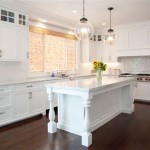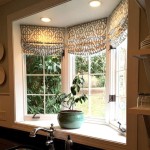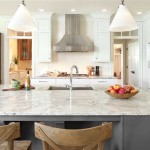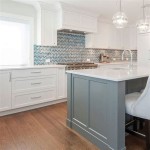Paint Ideas for Open Living Room and Kitchen
Open-concept living spaces, combining the kitchen and living room, have become increasingly popular for their airy and social atmosphere. However, designing a cohesive color scheme for these interconnected areas can be challenging. Selecting the right paint colors is crucial for defining zones, establishing flow, and creating the desired mood. This article explores various paint ideas for open living room and kitchen combinations, considering factors like natural light, existing décor, and desired ambiance.
Embrace the Power of Neutrals
Neutral paint colors offer a versatile backdrop for open-plan living spaces. Shades like beige, gray, greige (a blend of gray and beige), and off-white create a sense of spaciousness and allow for flexibility in incorporating colorful accents through furniture, artwork, and accessories. Warmer neutrals, such as cream or taupe, can infuse a cozy atmosphere, while cooler tones like light gray or pale blue contribute to a more modern and airy feel. Consider the existing flooring and cabinetry when selecting a neutral; if these elements are warm-toned, a warmer neutral on the walls will create harmony. Conversely, if the flooring and cabinetry are cool-toned, opting for a cooler neutral on the walls maintains visual balance.
Create Visual Interest with an Accent Wall
While maintaining a consistent color palette throughout an open-plan space promotes flow, introducing an accent wall can inject personality and visual interest. The accent wall can define a specific zone, such as the dining area within the living room or the backsplash area in the kitchen. Choose a color that complements the overall color scheme but provides a distinct contrast. For example, if the main wall color is a light gray, a deeper charcoal gray or a rich navy blue can create a striking accent wall. Alternatively, a vibrant color like emerald green or burnt orange can add a pop of energy. Consider the architectural features of the space; a fireplace wall or a wall with interesting architectural details can serve as a natural focal point for an accent color.
Utilize Color to Define Zones
In an open-concept space, strategic use of color can subtly define different functional zones without building physical walls. For instance, a slightly darker shade of the main wall color can be used in the dining area to visually separate it from the living room. Similarly, a different but complementary color can be used on the kitchen walls to distinguish the cooking space. This approach maintains a sense of openness while providing visual cues that delineate the different areas. Pay attention to the transition areas between the zones; smooth transitions in color can enhance the flow and prevent abrupt changes that might disrupt the visual harmony.
Harmonize with Existing Elements
When selecting paint colors for an open living room and kitchen, consider the existing elements such as flooring, cabinetry, and countertops. The wall color should complement these elements and create a cohesive overall aesthetic. If the kitchen features dark wood cabinets, a lighter wall color can brighten the space and prevent it from feeling too heavy. Conversely, if the cabinets are light-colored, a slightly darker wall color can provide contrast and depth. Similarly, the flooring material and color should be considered when selecting a wall color. A cohesive palette enhances visual harmony and prevents the space from feeling disjointed.
Consider the Impact of Natural Light
Natural light plays a significant role in how paint colors appear. Rooms with ample natural light can handle darker and richer colors without feeling closed in. Conversely, rooms with limited natural light benefit from lighter colors that reflect light and create a sense of airiness. When selecting paint colors, test them in the space at different times of day to assess how they look in varying lighting conditions. Consider using lighter colors in areas with less natural light and reserving darker or more saturated colors for areas with abundant natural light.
Think About the Desired Ambiance
The chosen paint colors should contribute to the desired ambiance of the open-plan living space. For a relaxed and calming atmosphere, consider soft pastels or cool neutrals. For a vibrant and energetic space, opt for bolder colors or warm neutrals. Consider the overall style of the space; a minimalist design might benefit from a monochromatic color scheme, while a more eclectic design might embrace a mix of colors and patterns. The paint colors should reflect the desired mood and complement the overall design aesthetic.

17 Excellent Ideas How To Decorate Open Floor Living Room Properly Dining Plans Concept

Choosing A Palette For An Open Floor Plan Colorfully Behr

Choosing Paint Colors That Flow From Room To Open Kitchen And Living Concept

Choosing A Palette For An Open Floor Plan Colorfully Behr

How To Choose Paint Colors Ideas For An Open Floor Plan

How To Choose Paint Colors Ideas For An Open Floor Plan

Open Concept Decorating

How To Decorate An Open Plan Kitchen Living Room Dulux

Best Paint Colors For Open Floor Plan Wall

Choosing A Palette For An Open Floor Plan Colorfully Behr








